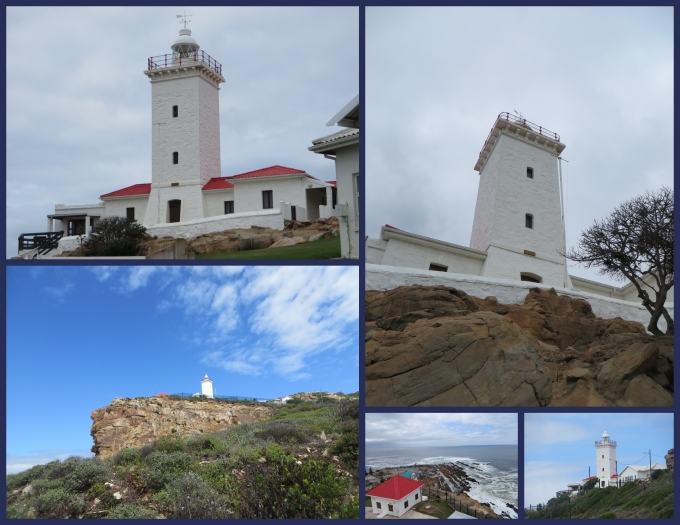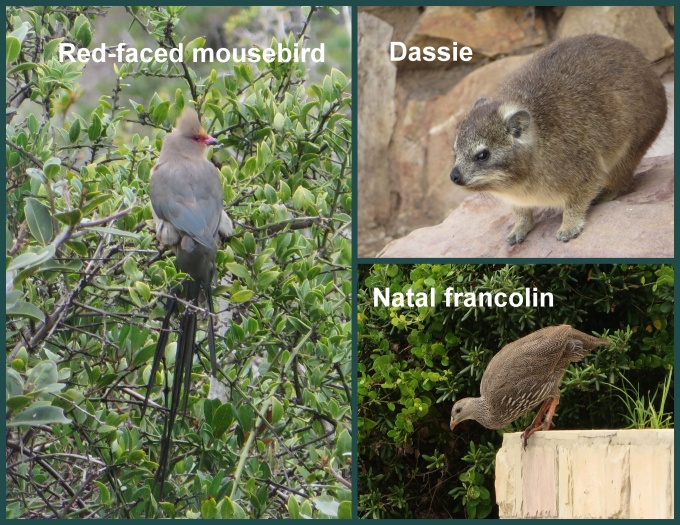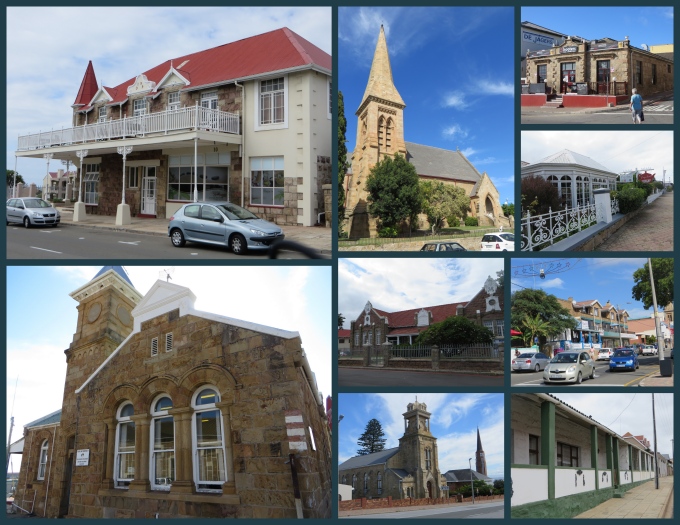Enjoying the Dias Museum Complex
Another sunny day in Mosselbaai and we were heading back to town to visit the Dias Museum Complex. Having read more about the museum and all it encompassed, we were keen to get an early start and spend the morning there. First, though we headed to Seven Seas Marine, because what's a stop in a seaside town without visiting the local chandlery? We found some sail slides that might replace all those we broke and chatted with the owner's son for a bit. Then we needed a cuppa and The Old Boat Yard tea room with a craft shop attached was on the way and looked appealing. We stopped for a French press coffee and a wonderful chat with the owner, Annamarie. This is a friendly little port!

We finally made it to the museum by 10am. What a gem of a place! The museum complex is comprised of several buildings with a lovely botanical garden in the center. We entered through a replica of a granary built in 1786 by the Dutch East India Company. After purchasing our tickets, we stepped out into the bright sunlight and the gardens. David checked out the sundial …which, he determined on this sunny day, was quite accurate.

The views of Santos Beach were outstanding as we headed towards the maritime museum building. It was on this very beach that Dias made his first foray ashore in South Africa.

I was particularly interested in the Post Office Tree which sits in the botanic gardens under a large, spreading milkwood tree thought to be more than 500 years old. I love this kind of stuff. Here's the story. In 1500, a Portuguese navigator, Pedro d'Ataide, returning from India, left a message in a boot hanging from a tree near a known fresh-water spring, warning that Calcutta had been overtaken by Borneans and was no longer safe for Portuguese. In 1501, Joao da Nova found the note and diverted his fleet to Malacca to avoid altercation. In this way, the first “post office” in South Africa was founded.
Sailors have left and retrieved letters and notes here and many other well-documented places for centuries. We came prepared with written postcards and stamps and I, of course, felt compelled to mail them from the famous Post Office Tree. The museum has provided a large “shoe” mail box in which to deposit them and has promised to hand cancel them, providing the unique, official Post Office Tree postmark.

In 1988, a full-size replica of Dias' caravel, built in Portugal, set sail from Lisbon to celebrate the 500th anniversary of Dias' landing in Mosselbaai. On arrival and after much fanfare, the ship was laboriously transported from the harbor and moved intact to the museum where it is now proudly displayed. The maritime museum building, by the way, was built in 1901 as a granary and saw mill. It was adapted in 1987 to serve as the maritime museum.

We were able to board the caravel and explore above and below decks. There were some modern conveniences installed on the replica for the crew ... like heads, a galley and sleeping quarters. The original caravel had sleeping quarters only for the captain and no galley or heads. The 1488 crew slept out in the elements, cooked on deck and the toilet facilities? Well ... rough accommodations. We definitely prefer life aboard Nine of Cups.

We were intrigued with the extensive cartography display showing “world” charts during the Age of Discovery (15th-17th centuries) and methods of determining location at sea. One map, purportedly stolen by the Columbus brothers, was purposefully altered to keep navigation information about routes to the “new world” secret.

There's a pleasant circular walk down the hill overlooking the beach past some replica cottages built on original foundations. We couldn't help admire Nine of Cups from our vantage point.

The last stop was the Shell Museum where, as expected, there was a large collection of shells from around the world. The exhibits were quite interesting and definitely more than a bunch of shells laid out on display. One exhibit highlighted the many uses of mollusks by man … from ink colors (sepia and purple) to food to adornment to working tools.

We had never really considered copulation methods in mollusks, but were surprised to discover that even slugs and snails have a love life. Always something new to ponder.

Once again, we met interesting people and chatted with folks throughout our museum visit. Mario and Grace were visiting from Adelaide and we had lots to talk about. We met Brigita who happily did a bit of research for us on finding some local traditional fabric called “shweshwe”. Belinda, her sister-in-law, joined in the chat. Belinda's husband owned the chandlery we had visited earlier in the day. Everyone asked lots of questions about Nine of Cups and life aboard. They offered friendly assistance for anything we needed.
Brigita related the story of 80-year-old Heinz, a solo sailor who had circumnavigated three times and decided that Mosselbaai was the place he wanted to settle for the rest of his life … and he did. We understand his enthusiasm for Mosselbaai. It's gorgeous here. We're on the look-out for him in town. Oh, the stories he could tell!




















